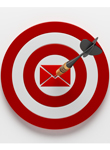 As a small business owner, you work hard to build up a list of email addresses from your customers so that you can reach out to them with news, sales info, and promotions to draw them back into your store. You add new names to your list every day, but the reality is that every year, a certain number of these shoppers may change their email address, lose interest, or unsubscribe from your messages. The question then becomes, what can you do to re-engage those shoppers who have fallen by the electronic wayside and draw them back into your store or onto your store’s web page?
As a small business owner, you work hard to build up a list of email addresses from your customers so that you can reach out to them with news, sales info, and promotions to draw them back into your store. You add new names to your list every day, but the reality is that every year, a certain number of these shoppers may change their email address, lose interest, or unsubscribe from your messages. The question then becomes, what can you do to re-engage those shoppers who have fallen by the electronic wayside and draw them back into your store or onto your store’s web page?
One answer is to use a marketing tool know as email reactivation. You may already have some automation features at work for you if you use an email service like Constant Contact® or Mailchimp®. When someone first signs up to be a part of your email list, an automated email is generated by the platform to go out to that person to a) confirm they have been entered, and b) welcome them to your company. You can control this message, just as you can set up additional automated messages based on a shopper’s activity – or inactivity.
It may seem counterintuitive, but part of re-activating your list is culling out those people who are truly no longer worth your promotion time and energy: the net result may be that your overall email list ends up SMALLER than where you started. This sounds off, but in essence, it is where you want to be. If you have an email list of 8,000 people but only 5,000 are routinely opening and clicking on your messages, you need to isolate those 3,000 ‘inactives’ and try to get them re-engaged. If they respond, great, but if they don’t… time to remove them from your list. Look at it this way: it’s better to send your message to 6,500 engaged people than to 8,000 people, 1,500 of whom really aren’t reading or interacting with you in any way. Your email metrics will increase, and based on your email service, your fees may decrease, too.
Identifying Inactive Emails
The first step in the process is to isolate those people who really are not engaging with your email messages in any way. And something to understand is that this is not a one-size fits all formula. Your jewelry store is different from the shoe store across the street, which is also different from the stationary store next door. First, think about your customer’s purchasing cycle. Does your average customer come into your store every month? Every few months? Or, are they shopping for a big ticket item maybe only once a year? You will need to consider the answer to your question as a tool in deciding whether someone who hasn’t opened an email for 2 months is a bad sign (if your normal customer shops every month) or if they haven’t opened an email in 6 months (no alarms here because your average shopper comes in only annually).
Once you have your time frame determined, look at your email history reports and segment out all those people who haven’t opened an email in X months (answer from above). This is your target group.
What do you say?
Once you know who these people are, you need to communicate with them to try to get them back. Something as simple as sending an email with a subject line of “We Want You Back!” with a 20% off coupon in the email body can have a great impact on bringing people back to your store or to your web site. If you don’t want to start with a promotion like a coupon, you can also use a very direct approach, and say something along the lines of: “If we don’t hear from you by X date (clickable link) we will remove you from our list!” Alternately, you can send a simple message saying that you’d like your customers to update their email preferences so you can tailor the sales emails you send to them. Or, you can craft a survey asking some general questions. Web sites offering simple survey services are plentiful on the Internet – and who knows, maybe the feedback you get will be a brainstorm for you in improving your product line or your customer service!
Am I done?
Once you go through this process once, you’ll see the kinds of results that reactivating or reengaging your list can have on your email campaign results and your bottom line. But just because you’ve done it once doesn’t mean it’s done forever. It’s a sound business practice to review your email list at least once or twice a year and repeat this process on a large scale, as well as using automation. Once you’ve built your reactivation effort, you can program your email service provider to automatically generate this reactivation effort based on an email subscriber’s inactivity time frame. Over time, you will continuously cut out those people who really aren’t your best prospects, while engaging with and getting strong feedback from those who ARE your ideal customer.